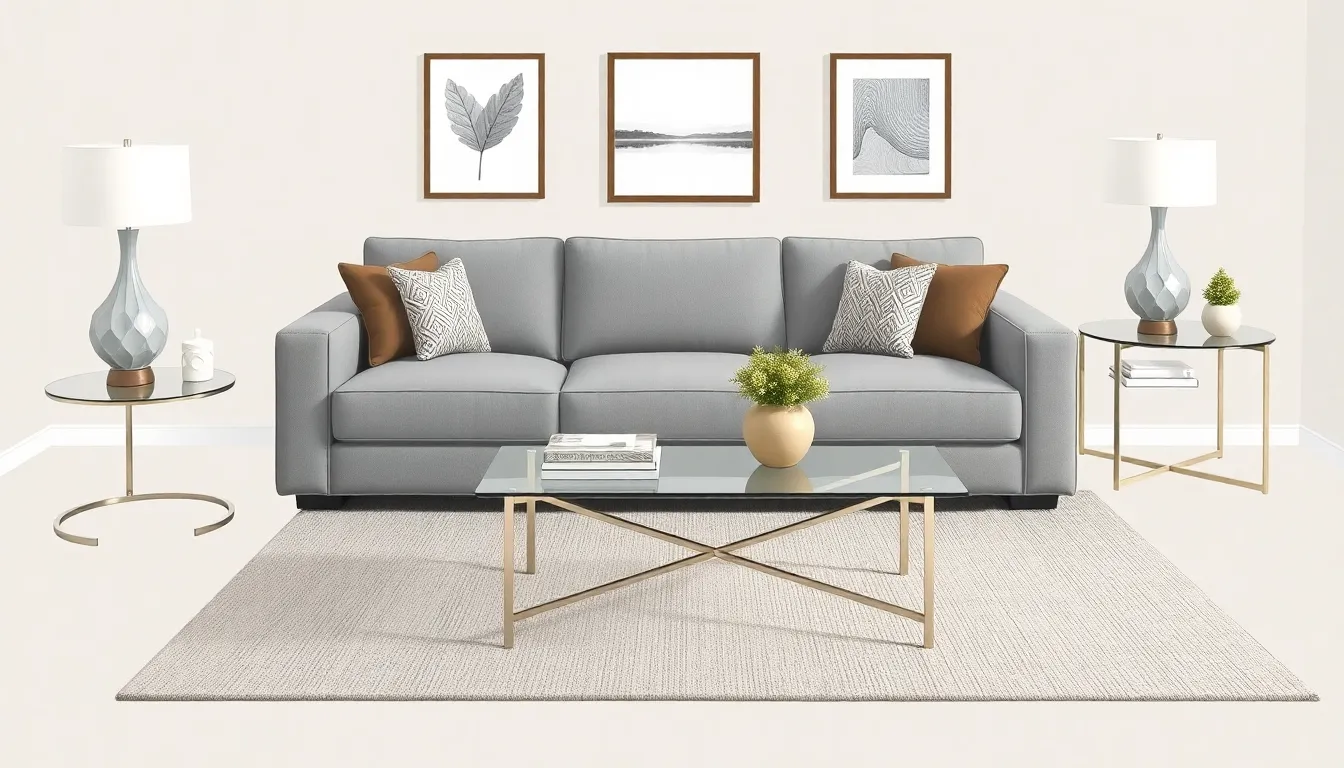When it comes to furnishing a space, measuring is the unsung hero of home design. Picture this: you finally find that perfect couch, only to realize it’s more suited for a yacht than your cozy living room. Avoiding such blunders starts with understanding furniture measurements.
Table of Contents
ToggleImportance Of Furniture Measurements
Measuring furniture accurately plays a crucial role in interior design. Ensuring proper measurements prevents costly errors like buying oversized sofas or too tall bookshelves. A well-measured space enhances the overall aesthetic, creating a harmonious environment.
Understanding furniture dimensions helps in planning room layouts effectively. Specific measurements enable proper spacing between furniture items for comfortable movement. Avoiding overcrowded areas starts with precise calculations.
Evaluating doorways and stairs before delivery also holds significance. Clearance issues arise when large items cannot pass through entrances, resulting in delays or returns. Measurements guide choices in scale, ensuring furniture complements the existing space.
Consideration of furniture height impacts functionality and visual appeal. Adjustable items, like tables or desks, need accurate measurements for ergonomics. The right height fosters comfort and usability for daily activities.
Determining proportions aids in balancing a room’s design. Oversized pieces can overwhelm smaller spaces, while minimal items may appear lost in larger areas. Thoughtful measurement supports an ideal proportional relationship.
Attention to depth and width influences seating arrangement and traffic flow. Multiple angles might change how furniture fits within a layout. Comfortable, inviting spaces emerge through careful planning based on accurate dimensions.
Optimal furniture measurements contribute significantly to an organized, functional living space. Understanding this leads to informed decisions that enhance both style and purpose. Taking time to measure ensures that each piece fits perfectly, elevating a home’s ambiance.
Standard Furniture Dimensions

Understanding standard furniture dimensions ensures a well-furnished space, allowing for better functionality and flow. Specific measurements guide selections for various areas.
Living Room Furniture
Sofas typically measure between 72 to 96 inches in length and 30 to 40 inches in depth. Coffee tables usually range from 16 to 20 inches in height and 36 to 48 inches in length. TV stands generally have a width of 47 to 70 inches, while side tables average about 20 to 30 inches in height and can be 18 to 24 inches in diameter. These standard dimensions help achieve a balanced and comfortable living room.
Bedroom Furniture
Queen-size beds measure 60 inches wide by 80 inches long, while king-size beds expand to 76 inches wide and 80 inches long. Nightstands often sit 24 to 28 inches in height and are around 18 inches deep. Dressers can vary in width, averaging 30 to 60 inches and typically stand 30 to 36 inches tall. Proper dimensioning enhances bedroom aesthetics and functionality.
Dining Room Furniture
Dining tables generally range from 60 to 72 inches in length, accommodating six to eight seats. Chair heights usually range from 17 to 19 inches, ensuring comfort during meals. Buffet tables often measure about 30 to 36 inches in height and 60 to 80 inches in length. Correct sizing fosters a welcoming and useful dining area.
How To Measure Furniture Correctly
Accurate measurements ensure furniture fits perfectly in a space. Proper dimensions enhance functionality and aesthetics in interior design.
Tools Required
Measuring tape serves as the primary tool, providing precise length and width readings. A notepad helps in recording measurements, ensuring everything stays organized. A level assists in checking for even placement, while a square can verify corners for accuracy. Finally, a calculator may assist in quick arithmetic to sum measurements or convert dimensions.
Step-By-Step Guide
Start with clearing the area where the furniture will go. Measure length, width, and height using the tape, noting each measurement down. Height is crucial for ensuring pieces fit well under ceilings or shelves. Check doorways and hallways to confirm large items can pass through without obstruction. Confirm your measurements match standard furniture dimensions for optimal fit. Repeat these steps for each item, ensuring accurate planning and a harmonious arrangement in the room.
Common Mistakes In Furniture Measurements
Proper furniture measurements significantly impact the feel and function of a space. Common errors can lead to frustrations and a less-than-ideal layout.
Overestimating Space
Estimating available space inaccurately often leads to oversized furniture choices. Many assume that visual impressions and measurements are interchangeable, but the latter is crucial. A room that seems spacious might not accommodate a large sofa or dining table without compromising movement. Eliminating clutter and measuring dimensions before making decisions is essential. Taking note of these details can prevent inconveniences, saving both time and money.
Underestimating Scale
Underestimating the scale of furniture is another frequent mistake. This error typically occurs when individuals select smaller items to fill larger rooms, leading to an unbalanced aesthetic. Each piece should harmonize with its surroundings for visual appeal and functionality. Understanding the scale lets homeowners avoid choosing items that look dwarfed against expansive walls. Correctly assessing the proportions fosters a cohesive design, enhancing the overall ambiance of the space.
Accurate furniture measurements are essential for creating a well-designed and functional living space. By understanding dimensions and evaluating space properly, individuals can avoid costly mistakes and enhance their home’s aesthetic. Proper sizing ensures comfortable movement and prevents overcrowding, making every room inviting and practical.
Taking the time to measure correctly and consider standard dimensions leads to a harmonious arrangement that balances visual appeal with functionality. This attention to detail not only saves time and money but also contributes significantly to an organized environment. Ultimately, thoughtful measurements transform a house into a truly welcoming home.


